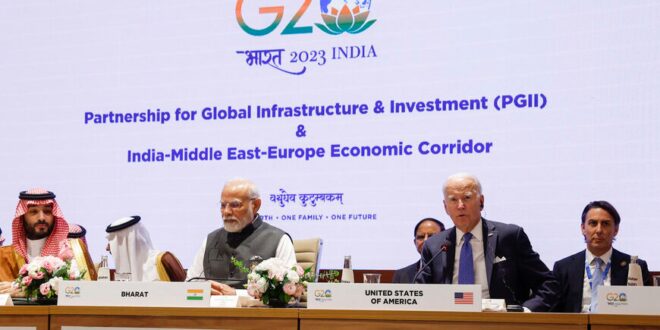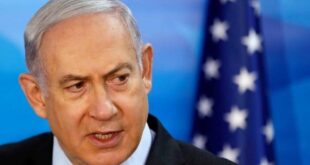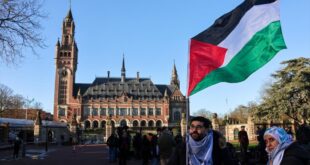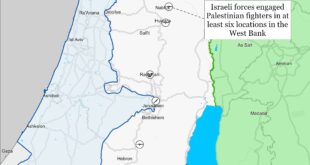The recently announced India-Middle East-Europe Economic Corridor (IMEC) project linking India with markets in the Middle East and Europe was the highlight of the G20 summit this year. The new corridor represents half the global economy and 40% of the world’s population.
According to the memorandum of understanding signed on Sept. 9 by the European Union, France, Germany, India, Italy, Saudi Arabia, the United Arab Emirates and the United States, the IMEC will include a multimodal rail channel employing both railway tracks and shipping routes over a distance of 5,000 kilometers (3,106 miles). In tandem, a network of undersea electrical cables and green energy pipelines will be laid between India and Greece.
Calling it “much more than just a railway or a cable,” European Commission President Ursula von der Leyen has described the new corridor as “a green and digital bridge across continents and civilizations.”
Consolidates India’s outreach
The project offers a number of benefits.
First, IMEC consolidates India’s geoeconomic outreach to the Middle East by cutting costs, as shipping containers can reach from the port in Mumbai to Dubai and onward to the port in Haifa in 40% less time.
Even as New Delhi’s dependence on the Middle Eastern energy industry grows, this corridor can provide secure connectivity and upgrade ties with Arab states where there is a large Indian diaspora.
At the same time, New Delhi plans to continue working with Russia on advancing the International North-South Transport Corridor — the first Russia-Saudi Arabia direct freight train arrived in Jeddah only last month. In fact, its trade relations with Moscow have grown exponentially since 2022.
Second, the India-Gulf venture could politically speed up the normalization of ties between Riyadh and Tel Aviv, synchronizing with Washington’s efforts to establish an understanding between Saudi Arabia and Israel.
In fact, Israel’s Prime Minister Benjamin Netanyahu welcomed the move. The initiative is a major diplomatic breakthrough between Saudi Arabia and Israel as well as offering multinational transport and communications benefits.
Third, this project can help Riyadh and Abu Dhabi in balancing both Washington and Beijing, as the compatibility and “cohabitation” factor of the IMEC is a definite plus point.
Comprising two separate corridors, the eastern end of the IMEC connects India to the Arabian Gulf while the northern side connects the Gulf to Europe.
As Beijing has been running Greece’s Port of Piraeus and maintains a presence at the Haifa port, the new corridor can function in parallel with China’s Belt and Road Initiative.
Finally, since the IMEC fits in with Riyadh’s Saudi Vision 2030 agenda and connects the UAE with a wider global audience, it can become a vital transit hub geopolitically.
Nevertheless, some challenges await the IMEC.
For starters, countries like Iran and Turkey have not been included in the trade corridor. At the G20 summit, Turkish President Recep Tayyip Erdogan stated that “there is no corridor without Turkey” as it is an “important production and trade base” and “the most convenient line for traffic from east to west.”
Instead, he suggested another route: the Iraq Development Road project. Egypt and Algeria are also cut off from the northern corridor, while Iran, Iraq, Oman and Yemen cannot benefit from the eastern part.
Ashok Swain, a professor of peace and conflict research at Uppsala University in Sweden, told Al-Monitor, “The absence of Iran and Turkey from the planned India-Middle East-Europe Economic Corridor renders it a nonstarter. Additionally, India has struggled to fulfill its commitment to developing Chabahar Port in Iran — a project it has envisioned for the past two decades to counter China-backed Gwadar Port in Pakistan.”
Also, by taking up the limelight, the IMEC could present a challenge to Iran’s Chabahar Port, which is already stagnating due to India’s inability to develop the port due to continuing US sanctions. Last month, both sides agreed not to seek foreign commercial arbitration for disputes over the lagging bilateral projects.
However, Roberto Neccia, an Italian diplomat formerly posted in Tehran, told Al-Monitor that the IMEC initiative will not affect India’s interest in developing Chabahar Port, as recent developments seemed to suggest.
Neccia noted, “In Iran, it didn’t go unnoticed that countries like Yemen, Syria and Lebanon, all with close ties to Tehran, were not included. On the other hand, the exclusion of Turkey is significant from the point of view of Tehran as it leaves open the possibility … in the future — if and when talks with the United States resume — to link its gas infrastructure to the energy corridors toward Europe, which is an old project, frozen due to the collapse of the Joint Comprehensive Plan of Action.”
From an economic point of view, Neccia said the project “fits quite well into the Saudi plan for economic diversification and should not be seen in the context of the old zero-sum regional game, and the same goes for the other GCC countries.”
He added, “The circle of power in Tehran — interested in this phase to assure the sustainability of the detente with Riyadh — is aware that from the point of view of the Saudis, the corridor is likely viewed neither as a part of a strategic competition with Tehran nor as a part of any effort to push for a relation with Israel.”
Meanwhile, the IMEC needs more time.
Since the corridor consists of both sea and land sections, it lacks vital connections such as roads and railway tracks that will take time to build.
Swain expressed “serious doubts about the viability of executing the planned India-Middle East-Europe Economic Corridor” and questioned whether “they possess the necessary financial resources to carry out such a project.”
Though the basic infrastructure already exists, Greece — the European port closest to the IMEC — has a mountainous geography and an insufficient railway system. Likewise, building extensive railway networks across deserts in Saudi Arabia and the UAE will require extra financing and a lot of time.
Considering this factor, Neccia said, “The implementation of the IMEC corridor — taking into account that its actual implementation requires an intense modernization of the supporting infrastructure — will not affect the overall geopolitical regional scenario.”
Iran’s priority is China
Regarding any immediate impact of the IMEC on the region, Neccia argued that in the absence of significant progress in talks with the United States, Tehran would have more interest in developing stronger economic relations with Beijing.
In the meantime, Swain holds reservations about the “willingness of Gulf countries, especially Saudi Arabia and the UAE, to take on a leading role in a project perceived as countering China’s Belt and Road Initiative.”
The domestic impact may be more favorable within India as it boosts the current government’s popularity.
“India’s Prime Minister Modi’s interest in this endeavor seems to stem primarily from the potential benefits to his favored businessman, Gautam Adani, who is currently facing economic challenges and holds extensive business interests along this route, including control over some ports,” said Swain.
For now, the deal is only on paper. The memorandum is a declaration of intent, but there is not yet “any obligation on any partner to take action toward the implementation of the IMEC,” noted Abdul Aziz AluWaisheg, assistant secretary-general for political affairs at the Gulf Cooperation Council, in a recent op-ed for Arab News.
Ostensibly, the signatories will meet again in November to announce an action plan. An investment of around $17 billion is required and around 100,000 jobs need to be created to complete the scheme.
 Eurasia Press & News
Eurasia Press & News




